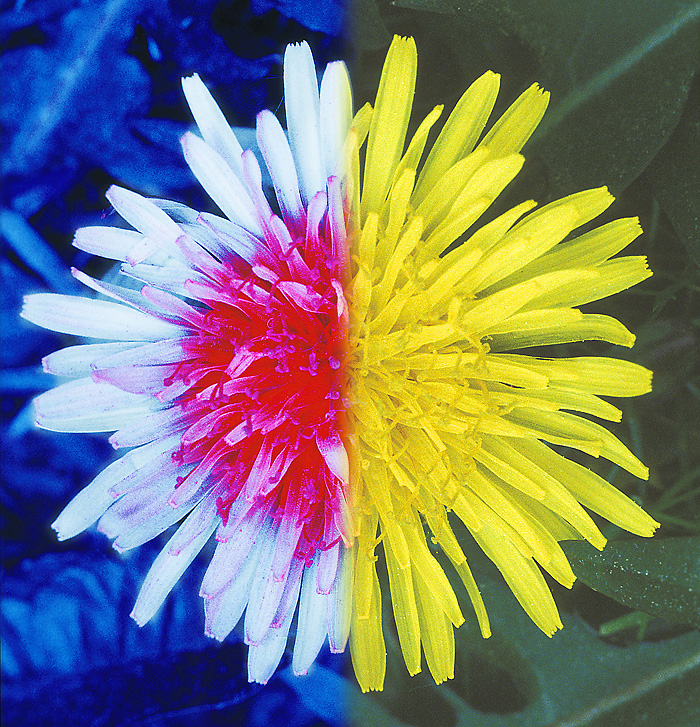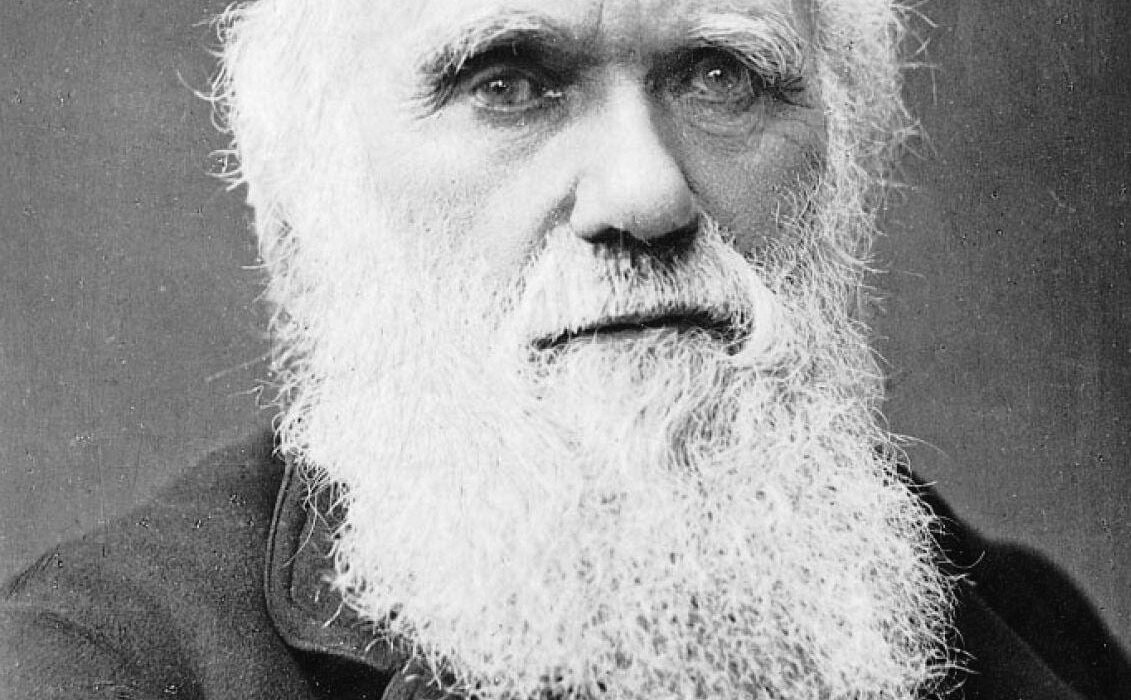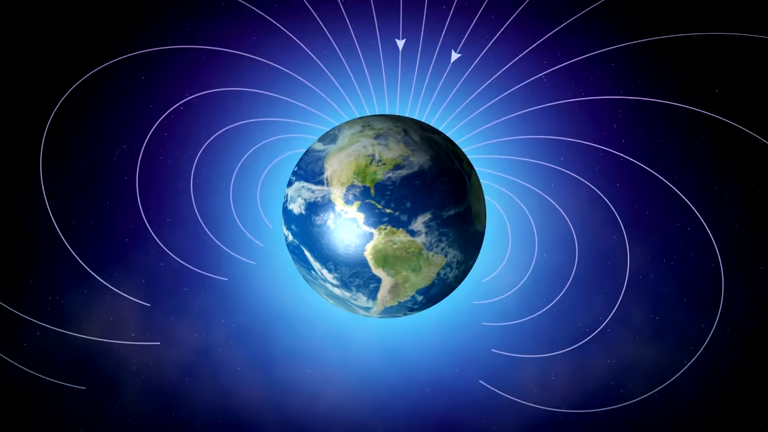On a warm summer afternoon, when sunlight dances across a field of wildflowers, most of us are captivated by the bright yellows, reds, and blues. We marvel at the beauty, yet we see only part of the story. For bees, the same field is a glowing masterpiece, filled with hues and patterns invisible to us. Bees live in a different sensory universe, one where ultraviolet light paints hidden designs on petals, guiding them to nectar and pollen. Their vision is not just a biological curiosity—it is an evolutionary masterpiece, a secret code shared between flowers and their tiny pollinators.
To understand why bees see colors humans cannot, we must step into their world, a world shaped by millions of years of co-evolution. It is a story that combines physics, biology, and the profound interconnectedness of life on Earth. It is also a reminder of how limited our own perception is, and how much wonder exists just beyond the boundaries of our senses.
The Nature of Color
Color is not an inherent property of objects. A flower is not “red” or “blue” in itself. Rather, color is the result of light—tiny packets of electromagnetic energy called photons—interacting with matter. When light strikes a surface, some wavelengths are absorbed and others are reflected. Our eyes capture these reflected wavelengths and translate them into color.
The visible spectrum for humans stretches from about 400 nanometers (violet) to about 700 nanometers (red). Beyond these limits lie ultraviolet and infrared light, wavelengths we cannot see but which exist all around us. To us, they are invisible; to other creatures, they are vibrant and full of meaning.
Bees belong to that other world. Their eyes are sensitive to a different range of wavelengths. Instead of perceiving the spectrum from red to violet, bees’ visual world extends from ultraviolet through blue to green. They cannot see deep reds the way we can, but they can see ultraviolet, which is hidden from us. To a bee, a daisy or a sunflower is not just yellow—it glows with ultraviolet markings, bullseye patterns invisible to human eyes but vital to survival.
The Architecture of Bee Vision
The secret lies in the structure of their eyes. Bees have compound eyes, made up of thousands of tiny units called ommatidia. Each ommatidium functions like a miniature lens, capturing light from a small part of the visual field. Together, they form a mosaic-like picture of the world.
Within these ommatidia are photoreceptor cells, each tuned to specific wavelengths of light. Humans have three types of photoreceptors, or cones: one for short wavelengths (blue), one for medium wavelengths (green), and one for long wavelengths (red). This trichromatic system allows us to blend signals into the rainbow we know.
Bees also have three types of photoreceptors, but their system is shifted. Instead of red, green, and blue, bees see ultraviolet, blue, and green. This UV-blue-green vision opens a spectrum that overlaps ours only partly. Where we see red, bees see darkness, but where we see nothing in ultraviolet, bees see radiant colors and patterns. To them, the world is painted in shades we cannot name.
Imagine a meadow from a bee’s perspective: petals with ultraviolet landing strips, guiding lines glowing like neon signs, and nectar guides pointing the way to nourishment. What looks like a plain white flower to us might blaze with ultraviolet symmetry for a bee, transforming the ordinary into a secret beacon.
Flowers and Bees: A Co-evolutionary Dance
Why do bees see this way? The answer lies in the deep evolutionary relationship between bees and flowering plants. For over 100 million years, bees and flowers have co-evolved, each shaping the other’s biology.
Flowers need pollinators to reproduce. Bees need nectar and pollen for food. Over time, plants developed strategies to attract bees—bright colors, sweet scents, and most intriguingly, patterns visible only in ultraviolet. These nectar guides, invisible to humans, are evolutionary advertisements: “Here is where the nectar lies. Come and drink, and carry my pollen with you.”
Bees, in turn, evolved eyes capable of detecting these signals. Their ability to see ultraviolet is not accidental but essential. It increases efficiency, guiding them straight to nectar-rich regions and helping them distinguish between flowers that are rewarding and those that are not. Flowers that developed ultraviolet markings had greater success in attracting pollinators, passing on their genes and reinforcing the partnership.
This co-evolutionary dance is a silent symphony of mutual benefit. Each bee, following invisible cues, ensures the survival of countless plant species, while the plants, in turn, provide the sustenance that keeps bee colonies alive. Without this relationship, entire ecosystems would collapse.
The Hidden Patterns of Ultraviolet
What exactly do bees see when they look at flowers? Scientists have used ultraviolet photography to reveal the hidden designs. The results are breathtaking.
A buttercup that looks uniformly yellow to us reveals a dark ultraviolet center surrounded by glowing petals. A daisy, seemingly simple and white, displays a bullseye pattern, drawing bees straight to its pollen. Orchids, sunflowers, and countless other flowers carry intricate ultraviolet marks—arrows, spots, and radiating lines invisible to humans but blazing with clarity in the bee’s world.
Even more fascinating is how these patterns differ between species. Each flower’s ultraviolet design is like a signature, helping bees recognize and remember their preferred food sources. This is especially important in a meadow buzzing with life, where efficiency matters for survival. A bee can quickly learn that certain UV patterns mean rich nectar, while others offer little reward. In this way, ultraviolet vision enhances memory, navigation, and survival.
The Physics of the Invisible
Ultraviolet light lies just beyond the violet end of our spectrum, with wavelengths shorter than 400 nanometers. Human eyes cannot detect it because our cornea and lens block most UV radiation, protecting our sensitive retinas from damage. Bees, however, have evolved transparent lenses that allow ultraviolet to pass through. Their photoreceptor cells contain pigments specifically tuned to absorb these shorter wavelengths, translating them into signals their brains interpret as color.
This does not mean bees “see ultraviolet” in the way we imagine. Rather, their brains combine signals from UV, blue, and green receptors to create a perception of color that is alien to us. Just as we cannot describe what red looks like to someone who has never seen it, we cannot truly imagine the colors bees see. They inhabit a perceptual world parallel to ours but forever inaccessible.
The Limits of Human Vision
It is tempting to think of human vision as the pinnacle of perception, but our sight is only one narrow window onto reality. Many animals perceive worlds we cannot. Birds, for instance, also see ultraviolet and use it to identify mates with plumage that looks plain to us but glows brilliantly to them. Snakes can detect infrared, sensing the heat radiated by prey. Mantis shrimp have as many as sixteen different types of photoreceptors, perceiving a world of color complexity beyond human imagination.
Our visual system is shaped by our evolutionary needs. Humans evolved as diurnal primates in forested environments, where the ability to distinguish ripe fruits and young leaves—often red or orange against green foliage—was vital. Thus, we developed sensitivity to red wavelengths, which bees lack. Bees, needing to navigate flowers and nectar guides, evolved sensitivity to ultraviolet instead. Each species sees what matters most to its survival.
The Intelligence of Bees
Bee vision is not just about perception but also about cognition. Bees can learn, remember, and even make choices based on colors. In experiments, bees trained to associate a certain color with a sugar reward will reliably return to that color, even when presented alongside distracting patterns. They can distinguish subtle differences in ultraviolet patterns and navigate complex mazes using color cues.
This suggests a remarkable level of intelligence for such small creatures. Their tiny brains, no bigger than a sesame seed, are capable of sophisticated processing. Bee vision is not a simple reflex but a tool of learning and memory, enabling complex behaviors like communication and navigation over long distances.
One of the most astonishing discoveries is that bees can perceive “color constancy”—the ability to recognize a flower’s color even under changing light conditions. This means their brains actively interpret sensory input, constructing a stable view of the world, much as ours do.
Beyond Biology: The Poetry of Perception
There is something profoundly humbling in the fact that bees see colors we cannot. It reminds us that our perception of reality is not complete, that what we call “the world” is only a fraction of what truly exists. We live within the boundaries of our senses, blind to vast realms of the electromagnetic spectrum, deaf to frequencies outside our hearing, unaware of scents carried by molecules too subtle for our noses.
Bees, in their silent flights, reveal the richness of existence beyond those boundaries. Their vision is a kind of poetry, a hidden layer of beauty woven into flowers, waiting for eyes evolved to see it. We may never experience their ultraviolet symphony directly, but we can glimpse it through science, through ultraviolet cameras, through the stories nature writes in petals and wings.
The Fragile Future of Bees
Understanding bee vision is not only a matter of wonder but of urgency. Bees are among the planet’s most important pollinators, sustaining ecosystems and agriculture. Their ability to perceive colors we cannot is central to this role. If flowers evolve patterns for bees, and bees vanish, those signals lose their meaning.
Today, bees face grave threats from habitat loss, pesticides, disease, and climate change. Colony collapse disorder has devastated populations worldwide. If bees disappear, the intricate co-evolutionary relationship that shaped their vision—and our food supply—will be imperiled. The colors of flowers may remain, but the eyes that were meant to see them will be gone.
Protecting bees means preserving not only biodiversity but also a dimension of reality we can scarcely imagine. It means safeguarding the hidden colors of the world, ensuring that the ultraviolet patterns continue to glow for wings that know how to read them.
Conclusion: A Universe Beyond Our Eyes
Bees see colors humans cannot because evolution wrote a different story in their eyes. Their ultraviolet vision is a bridge between physics and biology, between light waves and survival strategies. It is a gift that allows them to decode the secret language of flowers, to navigate with precision, to live in a universe painted in hues beyond our imagination.
For us, their vision is both a scientific revelation and a philosophical reminder. It reveals the beauty of co-evolution, the intelligence of even the smallest creatures, and the vastness of reality beyond human senses. It teaches us humility—that our perception is not the measure of existence but only one window among many.
Next time you see a bee hover over a blossom, imagine the world through its eyes. Imagine the glowing ultraviolet guides, the radiant patterns we cannot see, the symphony of light that fills its tiny brain with meaning. In that moment, you glimpse not just the life of a bee, but the infinite possibilities of perception itself. The world is larger, stranger, and more beautiful than we know—and bees are here to remind us.






